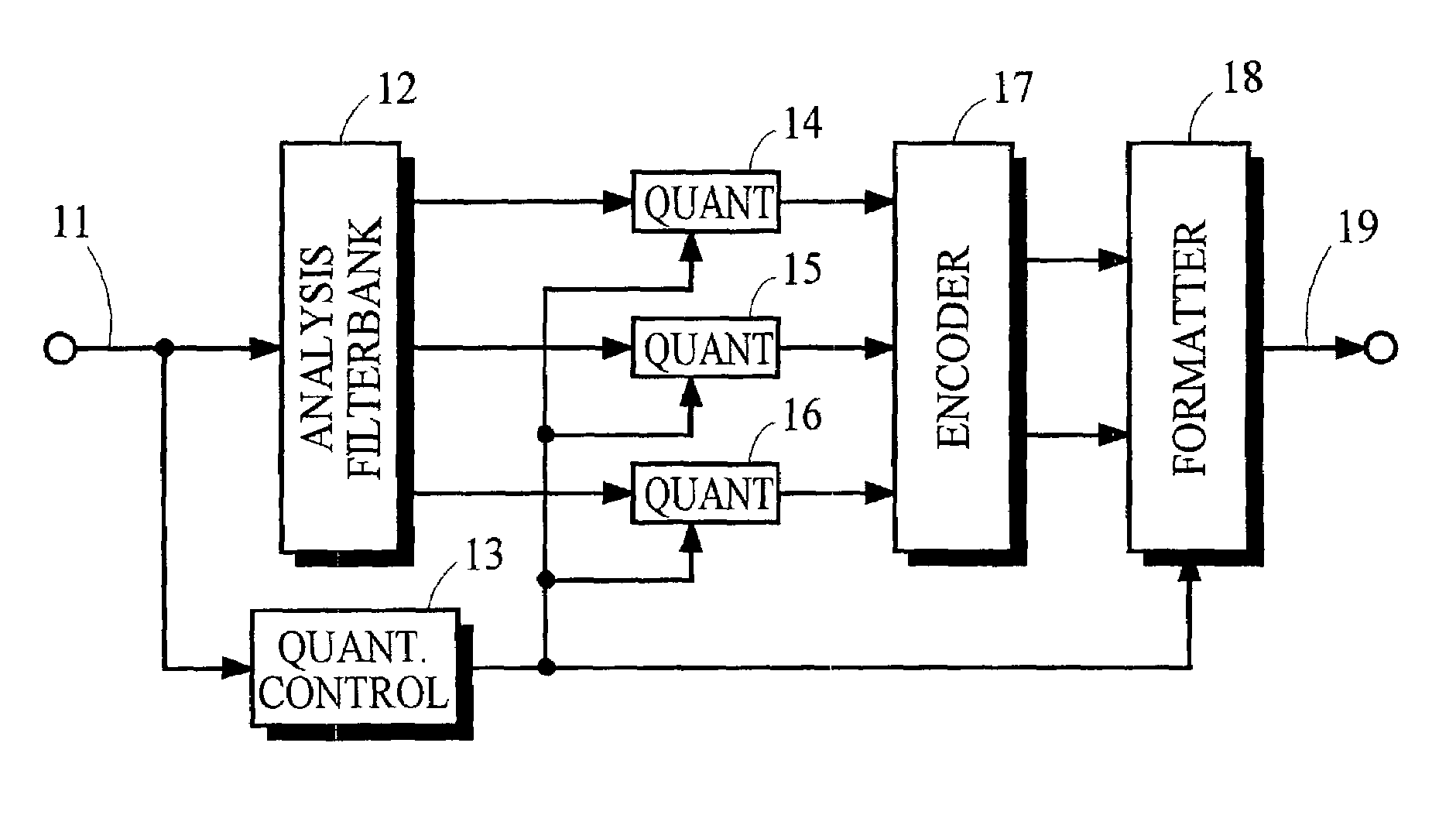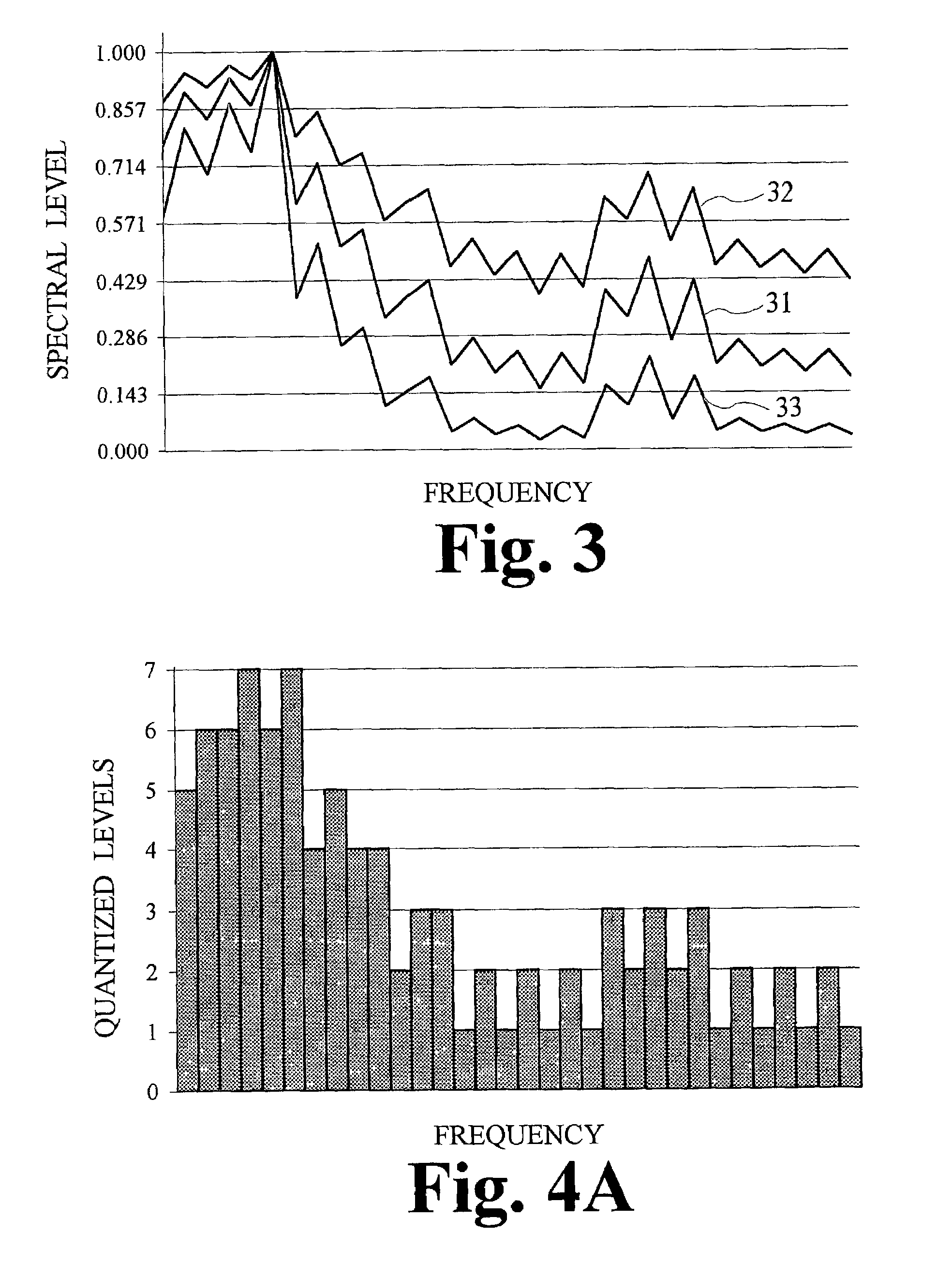Low bit-rate audio coding systems and methods that use expanding quantizers with arithmetic coding
a low bitrate and coding system technology, applied in the field of digital audio coding systems and methods, can solve the problems of huffman coding having serious limitations, unable to represent all signal components with sufficient quantization accuracy, and generally not providing beneficial effects of compressing quantizers
- Summary
- Abstract
- Description
- Claims
- Application Information
AI Technical Summary
Benefits of technology
Problems solved by technology
Method used
Image
Examples
Embodiment Construction
A. Transmitter
1. Overview
[0029]FIG. 1 illustrates one implementation of an audio encoding transmitter that can incorporate various aspects of the present invention. In this implementation, analysis filterbank 12 receives from the path 11 audio information representing an audio signal and, in response, provides digital information that represents frequency subbands of the audio signal. The digital information in each of the frequency subbands is quantized by a respective quantizer 14, 15, 16 and passed to the encoder 17. The encoder 17 generates an encoded representation of the quantized information, which is passed to the formatter 18. In one implementation, the quantization functions in quantizers 14, 15, 16 are adapted in response to quantizing control information received from the quantizer controller 13, which generates the quantizing control information in response to the audio information received from the path 11. The formatter 18 assembles the encoded representation of the q...
PUM
 Login to View More
Login to View More Abstract
Description
Claims
Application Information
 Login to View More
Login to View More - R&D
- Intellectual Property
- Life Sciences
- Materials
- Tech Scout
- Unparalleled Data Quality
- Higher Quality Content
- 60% Fewer Hallucinations
Browse by: Latest US Patents, China's latest patents, Technical Efficacy Thesaurus, Application Domain, Technology Topic, Popular Technical Reports.
© 2025 PatSnap. All rights reserved.Legal|Privacy policy|Modern Slavery Act Transparency Statement|Sitemap|About US| Contact US: help@patsnap.com



